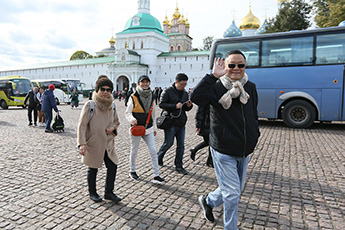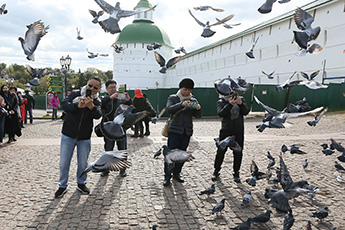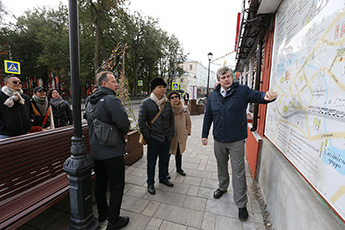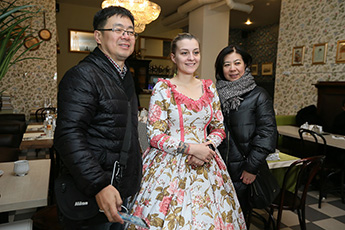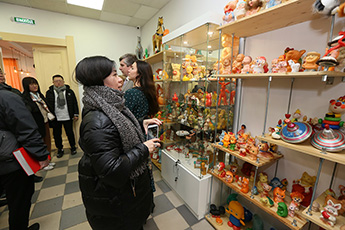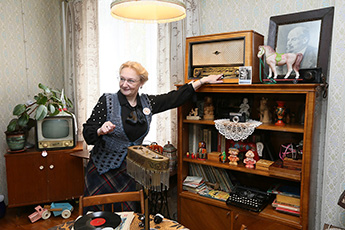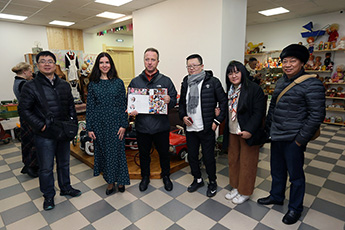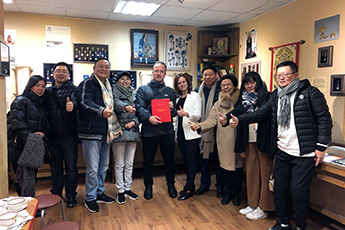Exhibitors of the “Great Chinese Calligraphy and Painting” exhibition visited private museums in Sergiev Posad and Vladimir region
Calligraphers and artists from China who exhibited at the “Great Chinese Calligraphy and Painting” event, took a two day trip to Moscow and Vladimir region.
Organized by Director of the Association of Private Museums of Russia, Alexey Shaburov, the route was designed to see the key sights of the two regions, as well as some private museums, which cannot be found in popular tour guides just yet but certainly will make it in the future. Their details have already been included in soft and hard copies of the “Private Museums of Russia. Talents of Russia” catalogue, which means they will become available to anyone dealing with the design of tours any time soon.
The Museum of Soviet Childhood in Sergiev Posad was the first along the line. Its founders, Semen and Olesya Zhiltsov, demonstrated dolls, weebles, metal toy cars, and other toys and table games of the Soviet era, describing their impact on the upbringing process, and engaged the guests in playing Chinese garter and hopscotch in the end.
Following the Soviet childhood experience, the team of calligraphers moved on to one of the central streets in Sergiev Posad – Carl Marx street, to be met by Lyubov Kornilova, the founder of Sergievskaya Kukhmisterskaya museum. Kornilova has been researching catering in Russia for more than 15 years. Chinese guests learnt typical Russian diets dating to the cusp of the 19th and 20th centuries, cooking methods, ingredients, ways to keep the food fresh, and how long it used to take to cook at no gas or electricity. Museum made rock candies also came into the picture, but there was more – the museum also operates a coffee shop that cooks more than 50 dishes based on the 19th century recipes.
After that the group departed to Vladimir region to see the Museum of Spoon, and Wax Museum.
The Museum of Spoon features the private collection of Tatyana Pikunova from Vladimir, which is the largest collection of cutlery in the country, and a Guinness record holder thanks to 15 000 exhibits. Windsors' coronation spoons, the spoons designed for the House of Romanovs, Welsh love spoons, apostle spoons and many others were shown to the visitors to take a fresh look at a common item, and learn its history, processing technology, and associated beliefs.
Wax Museum in Suzdal was a showcase of historical characters dating back to the 9th century and to date, including leaders, revolutionaries, battle commanders, poets, singers, writers, and artists who played a significant role in political and cultural life of Russia. Among others, the exhibition featured the “twins” of Prince Vladimir, Ivan the Terrible, Peter the Great, and of course, Joseph Stalin and Nikita Khrushchev – the leaders that reflect various periods of relationship between Russia and China. Overall the museum, founded by a group of enthusiasts led by Alexey Afanasov, exhibits more than 150 figures, including leaders from other countries. The collection is ever expanding, and considering the growing interest of Chinese tourists to Russia, it is quite likely that it will soon put a “copy” of Mao Zedong on display too.
“It took us three years to collect, translate into Chinese and forward the information about private museums of Russia to the leading tourism agencies of China to enable them to design tours across our regions and the locations where the talents of Russia preserve our root culture. The catalogue of the “Private Museums of Russia. Talents of Russia” now includes 450 unique private museums. Their founders deserve a great credit, and we hope that Chinese tourists will be visiting them often when travelling across Russia,” said Alexey Shaburov summarizing the trip.
